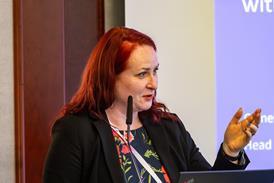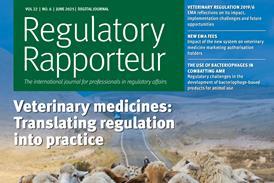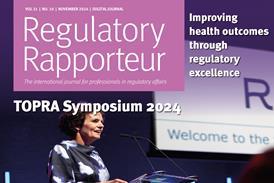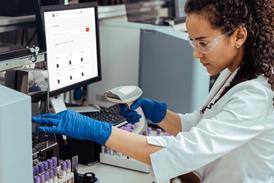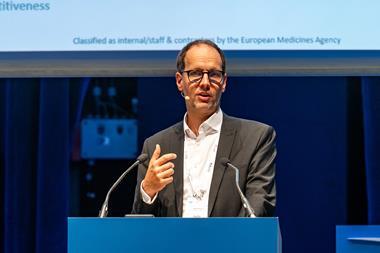In this interview, Professor Hugues Malonne, Chief Executive Officer of the Belgian Federal Agency for Medicines and Health Products (FAMHP), discusses the Agency’s strategic priorities, its role in shaping and facilitating European legislation and how it collaborates with other regulators, both within and outside the EU.
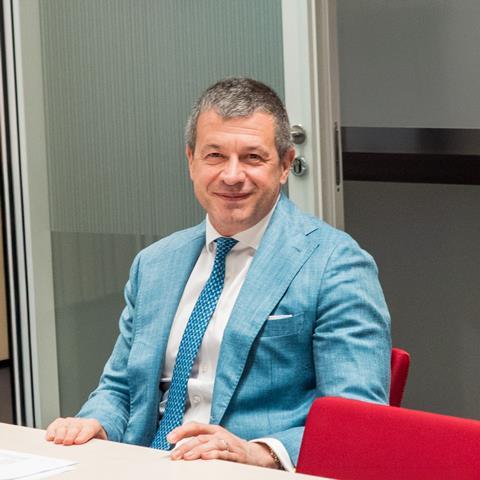
Q: Could you start by telling us a bit about your career path and the experience you’ve gained that has led to your appointment as CEO of the FAMHP?
A: I’ve been Chief Executive Officer for a little more than a year now. Before that, I was Director General of the directorate general POST authorisation for a little over five years, followed by a role as Director General of the directorate general PRE authorisation for one and a half years – all at the Agency.
Before that, I started my career as a pharmacologist at the University of Brussels, where I studied Pharmacy for my PhD. I have a Master’s Degree in the Management of Healthcare Facilities, also from the University of Brussels. I joined the pharmaceutical industry in 2005 as the External Affairs Director at MSD Belgium-Luxembourg. I then moved to China in the same position for three years and came back to Europe as the Head of Portfolio Market Access for EPD. I spent a year there, before running my own consultancy for three to four years before joining the Agency in 2017.
Q: What do you think has aided your career and helped you moved into the regulatory world?
A: I would say it’s good to have worked for a certain time in the academic world, before moving into the industry. I think it’s useful to have that background because the academic world, especially in Belgium, is a specific but unique environment, and is as important in the ecosystem as the business and company side. The people in charge of research and development are very keen to interact with both the regulators and the academic world and together, we are in a good position for what is ahead.
Q: You’ve been the Chief Executive Officer of the Agency for one and a half years now. How do you see the Agency evolving in the next five years with the strategic objectives and strategic plan that has been published?
A: I’m excited to share our vision and strategic objectives as we look ahead to the next five years at the Agency. Our 2025-2027 strategic plan is built on four key pillars that will guide our efforts and initiatives.
First, we are committed to delivering high quality service through a well-performing organisation. Quality service is a top priority for us, and we are constantly working to improve efficiency and adaptability. This includes significant investment in data security and the automation of our processes, particularly through the use of artificial intelligence. It’s essential for us to share information seamlessly and collaborate effectively, both internally and with our external stakeholders. This allows us to respond flexibly to developments in medicines and healthcare products.
Secondly, we want to improve the visibility of our commitments by improving communication with our external stakeholders, especially the public. We aim to provide accurate, reliable information tailored to different audiences for a variety of channels, including social media. Our priority is to provide reliable information and maintain targeted communication with all our stakeholders.
As a key player in the national, European and international healthcare ecosystem, we use our expertise to help improve public health in various ways. We facilitate access to innovative medicines, health products and therapies, ensuring their availability to patients. We adopt a proactive policy to anticipate problems related to medicines and healthcare products, and we strengthen existing legislation to make all players aware of their responsibilities. We also stand out in several areas where we make a lasting contribution at the European level, such as investing in vaccines and exploring new fields of expertise like Advanced Therapy Medicinal Products and medical devices.
Finally, we are dedicated to fostering an outstanding working environment. Our goal ‘Your medicines and health products, our concern’ comes to life every day through the expertise and dedication of our employees. Maintaining a quality working environment is one of our main priorities. Our employees are the essence of the Agency, and it’s crucial to contribute and invest in their wellbeing, expertise and skills. We value integrity and transparency, and we encourage transversal cooperation as a key element of our culture.
In summary, our strategy reflects both our vision and our ambition. We focus on recognition at national, European and international levels, developing partnerships with the healthcare sector, performing our core tasks professionally, informing the population optimally and establishing a learning organisation culture. By consistently reinforcing our expertise and strategies, we strive to maintain our strong position among competent authorities and to collaborate efficiently with our stakeholders to continuously improve public health.
Q: Could you elaborate a bit more on innovation, various vaccines and ATMPs? Also, what do you think is the best way to collaborate with other agencies in Europe, considering challenges such as having scarce resources, for example?
A: Advanced Therapy Medicinal Products (ATMPs) and vaccines are two major areas where we are seeing incredible advancements and opportunities for innovation. At the Agency, we have established two dedicated centres of excellence for these fields.
Let’s start with ATMPs. These therapies represent a groundbreaking shift in how we approach disease, especially diseases that traditional medicine can’t yet treat. These include gene therapies, cell therapies and tissue engineered products that can change the course of medical care. At the Agency, we are fully committed to supporting the development of those products across the entire lifecycle. That starts by offering Innovation Office meetings and scientific advice. We guide companies from the earliest stages, helping them navigate the regulatory path efficiently and strategically.
Next, we focus on the efficient handling of clinical trials and marketing authorisations. Our experienced teams ensure that applications are processed rigorously but without unnecessary delay. Safety and efficacy remain our top priorities. We are also building a dedicated ATMP spearhead team, including coordinators, assessors and inspectors with specialised expertise in ATMPs. Their role is to ensure we can manage the growing complexity of these products with confidence.
Collaboration is another cornerstone of our work. We work closely with academia, industry and fellow regulatory bodies, both nationally and across Europe. This collaborative approach helps us to stay at the forefront of scientific and regulatory development. These efforts are just the beginning. In 2025, we are focusing on growing our internal expertise and training. By 2026, we plan to expand or support even more emerging domains.
Turning to vaccines, this is another critical area of our strategy. We’ve been working in this field since 2007 and our Vaccine Centre of Excellence is dedicated to ensuring the quality, safety and efficacy of vaccines throughout their lifecycle. We invest in regulatory expertise at every stage, from development and clinical trials through to production, distribution and post-market monitoring. We work hard to create a supportive environment for clinical trials, reducing administrative burdens and helping sites meet high standards. We also support the entire vaccine chain to ensure vaccines are accessible when and where they are needed.
Public trust is critical. That’s why we are expanding our communication and education efforts, developing materials and campaigns that help the public and health professionals understand the safety and importance of vaccines. We have strengthened our system for detecting and evaluating adverse reactions so that we can act quickly and transparently if concerns arise. And just like with the ATMPs, we know that partnerships are essential. That’s why we are collaborating with national, European and international stakeholders to share knowledge, align standards and support global vaccines.
To sum up, innovation doesn’t happen in isolation. At the Agency, we take a proactive and collaborative approach to fostering progress, working hand-in-hand with regulators, industry and academia. Through centres of excellence, we are committed to supporting innovation, improving access and, ultimately, protecting and promoting public health today and in the years to come.
Q: In the past years, we’ve seen a number of major regulatory changes in the EU, with the Clinical Trials Regulation, the In Vitro Diagnostic Medical Devices Regulation and the Medical Devices Regulation. In the coming years, we’ll see the new pharmaceutical legislation that’s currently being developed and drafted. How is the Belgian Agency, as a national regulator, involved in shaping this legislation? And how do you prepare for these changes?
A: The Agency has the leading role in Belgium when it comes to medicines and health products, and with that role comes a strong responsibility, not just nationally, but across Europe. We are actively engaged in shaping European legislation related to medicines.
A great example is the Critical Medicines Act. The proposal, which the European Commission presented in March this year, actually stems from a Belgian initiative, and a paper we put forward back in April 2023, aimed at strengthening the security of medicine supply in Europe. Today, we are leading the effort to define the Belgian position on this important piece of legislation.
But our involvement doesn’t stop there – we are also closely monitoring and contributing to legislative development in other sectors, for example, with discussions starting soon on the next European multi-annual financial framework. We believe that the goals of the Critical Medicines Act should be a core part of that conversation. That’s why I have seized the opportunity of the recent Commission consultation to insist on the need to consider an EU-dedicated fund for critical medicines. This fund would support production capacity, strategic stockpiling and ensure the next research and innovation programme. That means investing in biotech, orphan medicines and devices combination products and novel platform technologies, all guided by the actual needs of the population.
Next, in policy shaping, we also play a central role in implementing legislation once it’s adopted. Our Agency is now working on the full implementation of the Clinical Trial Directive and the In Vitro Diagnostic Medical Devices Regulation. We are preparing for the application of the new regulation on standards of quality and safety for substances of human origin intended for human application.
Involving our experts at the earliest stage of the legislative process allows us to identify the needs, to define a sensible and balanced position, to assess the impact and, already, to prepare for the future implementation. Of course, we are not alone in this and we work closely with the European Medicines Regulatory Network, which brings together all EU regulatory agencies, including the European Medicines Agency (EMA), and with our fellow regional authorities.
Q: What we have seen from the proposed changes to the legislation is that, in several aspects, the rules appear to have become stricter in relation to non-compliance consequences for companies. For example, there are fines for Paediatric Investigational Plan (PIP) non-compliance, and in relation to the Environmental Risk Assessment (ERA), where non-compliance may, under the new rules (if maintained), lead to a negative benefit/risk and thus potentially lead to delays in approval and access to new innovative medicines for patients.
What are your thoughts on the principle of providing the regulator with more tools to enforce the legislation and the ERA specifically?
A: The proposed pharmaceutical legislation includes a number of measures that will lead to a gain in efficacy; for example, the removal of the renewal requirement and the abolition of the sunset clause are steps that will streamline procedures. The burden due to post-approval activities is already reduced by the recent revision of the variation regulations. However, the proposed pharmaceutical legislation also brings new challenges, both for regulators and the industry. To ensure that patients get access to the medicines they require, including those in specific populations, a combination of incentives and obligations is probably required in the legislation. It should be noted that negotiations on the revised pharmaceutical legislation are still ongoing, so we have to see what will be in the final text.
Another major consideration is the protection of the environment, which is high on the agenda and that naturally has implications for the pharmaceutical sector. Ideally, environmental risks should be addressed within the pharmaceutical legislation itself. That way, we can consider environmental concerns alongside the medicines’ benefit-risk profile for patients. This could lead to stricter environmental requirements but it avoids having medicines fall under broader environmental laws that may not account for their unique nature.
Additionally, a new field of activity that has emerged since the COVID-19 pandemic is the critical need for supply chain resilience, and ensuring the security of supply for medicines has become top priority. That’s why new rules are being developed at the European level to enable better monitoring, stronger preparedness and a faster response to future shortages. In short, while the new pharmaceutical legislation promises important gains in efficiency, it also brings complex challenges. Our goal must be to strike a balance to ensure patient access, maintain high standards, protect the environment and secure the availability of vital medicines for all who need them.
Q: As you alluded to in your previous question, we are living in a world that changes with unexpected crises, like the COVID-19 pandemic. In such situations, how do you work with other national agencies in Europe and the European Medicines Agency? Do you also see a role of national regulators in Europe when working with, for example, agencies in the UK or the FDA in the US?
A: We are living in an increasingly complex environment and the COVID-19 pandemic made one thing very clear: how important it is to pay attention to things which were once considered as self-evident.
In recent years, a new and crucial role has emerged from the Agency to ensure the continuous availability of medicines and healthcare products. This isn’t a simple task. It means stepping outside of our traditional comfort zone and looking beyond just the health sector issues; pricing, competition law, procurement rules, State Aid and trade policy all come into play when we talk about securing access to essential products.
To rise to this challenge, we need new tools, and that’s where the pharmaceutical package and the proposed Critical Medicines Act come in. What we have also learned is that no country can do this alone. Medicine shortages often stem from global disruptions – they don’t stop at the borders. That’s why international cooperation is not a luxury – it’s a necessity.
At the national level, we monitor supply chains closely using our own tools and supply chain intelligence, but when those risks extend beyond our borders, we turn to European mechanisms like the Executive Steering Group on Shortage and Safety of Medicinal Products. One important tool from this group is the Voluntary Solidarity Mechanism, which enables EU Member States to support each other when one is facing a shortage it cannot solve. In 2024, we brought international solidarity to the forefront during the launch of the Critical Medicines Alliance. As Vice Chair of the Steering Board and Chair of the Task Force International Partnership, I had the privilege of helping shape key recommendations. One of our messages was clear: we need formalised, structured engagement with trusted international partners when serious supply issues arise.
We also proposed creating a secure EU-wide repository where Member States can share their experiences with bilateral cooperation during shortages, so that we can learn from each other and act faster next time. These aren’t about building something completely new. They are about making what already works more transparent, more coordinated and ultimately more effective. In the end, ensuring patients get the medicine they need is only possible if we work together within Europe and globally.
At the moment, supply chain security is only one of the many challenges that National Competent Authorities are facing. Another major one is pandemic preparedness. As part of the European Medicines Regulatory Network, the FAMHP is actively involved in the ACT-EU project and working on accelerating clinical trials in Europe.
One key work package focuses on managing clinical trials in public health emergencies. The goal is to make large-scale, multinational clinical trials easier and faster to launch when emergencies strike. This requires strong collaboration with other national agencies and ethics committees and importantly, regulatory flexibility, based on what we have learned from the pandemic.
But even outside emergencies, time matters, and faster approval of clinical trials can significantly speed up access to innovative medicines. That’s why the Agency offers a fast-track procedure for mono-national clinical trial applications and we are now exploring how to extend that fast track model to all phases of mono-national trials.
However, speed is only part of the solution. Early dialogue is critical – that’s why we actively engage with both academia and industry through national and European scientific advice procedures. Belgium is well recognised for the quality of its scientific advice and this early input helps ensure that clinical trial applications are well prepared and can be approved swiftly. The environment we are working in is demanding, but it’s also full of opportunity. With the right tools, strong partnerships and continuous investment in expertise, we can meet these challenges and ensure that innovation translates into real, timely benefits for patients across Europe and beyond.
Q: To conclude, if people are interested in learning more about the Agency, where could they find information on things that you’re organising in the coming six months?
A: At the Agency, we want to be recognised as the leading authority for regulatory affairs and be a place known not just for its expertise, but also for its unwavering commitment to quality, innovation and public health. We aim to be a proactive and collaborative partner in the healthcare ecosystem; whether you are part of industry, academia, government or the wider public, we want you to feel confident in what we do and how we do it.
At the Agency, we don’t just want to deliver regulatory decisions; we want to build relationships, create opportunities and drive forward public health, whether you are developing a new therapy, submitting a dossier, or simply exploring how you can work with us: we are here to support you.
We offer a broad and diverse range of regulatory and scientific services, and we encourage everyone to get involved, especially in the fields of vaccines and ATMPs. You can listen to our May webinar, in conjunction with TOPRA’s Benelux Steering Group, where the Agency’s management support network presented our core competencies – this is a great starting point to understand the value we can bring to regulatory professionals’ work.
And as we look ahead, we are excited to support new initiatives that strengthen dialogue with industry. In 2025, the EMA plans to launch a project that focuses on improving presubmission interactions with applicants. It’s a joint effort with national agencies like ours and industry associations aiming to reduce premature submissions and enhance predictability.
My message to industry is simple: use the early dialogue tools already available, such as PRIME, pre-CTA advice, SNSA and EU scientific advice. These procedures are here for you. When you share your pipeline and challenges with us early, it helps us all to prepare better for the future and ensures the sustainability of the European network.
Beyond our regulatory mission, we also want people to see the Agency as a great place to work. We offer a dynamic and supportive environment where employees can grow, contribute meaningfully and be part of something bigger. If you are passionate about science, public health and innovation, the Agency could be the next step in your career.
Finally, if you want to stay informed about our work and future opportunities, follow us on LinkedIn – it’s the best way to stay connected and see how the Agency continues to grow and innovate.
Listen to the full podcast here.





